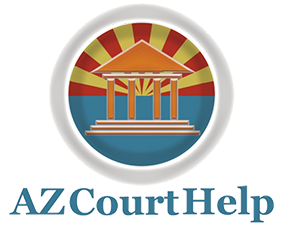How a criminal case moves through the court system
Criminal cases involve the commission of acts that are prohibited by law and are punishable by probation, fines, imprisonment, or even death. The attorney representing the state, county, or municipal government that formally accuses a person of committing a crime is the prosecutor. The person charged with the crime is the defendant. The judge not only ensures that the rights of the defendant are respected, but also the Constitutional provision and the statutorily required rights afforded to the victims of crime.
1. Arrest - A person is arrested by a law enforcement officer who either sees a crime happen or has a warrant for arrest when probable cause exists that a person committed a crime. When a person is arrested, the person must be brought before a judge for an initial appearance within 24 hours of being arrested or else be released.
2. Initial Appearance - At the initial appearance, the judge determines the name and address of the defendant, informs the defendant of the charges, and of the right to remain silent and to have an attorney. The judge appoints an attorney if the defendant cannot afford one and sets the conditions for release from jail.
3. Preliminary Hearing - If a preliminary hearing is held, the judge hears evidence and testimony from witnesses called by the prosecuting attorney and the attorney for the defendant. If the judge determines there is enough evidence to believe the defendant probably committed the crime, the defendant is held for trial in Superior Court and an arraignment date is set.
4. Arraignment - At the arraignment, the defendant enters a plea of guilty, not guilty, or no contest (nolo contendere). If the defendant enters a not guilty plea, the judge will set a trial date. If the defendant enters a guilty plea or declares no contest to the charges, the judge will set a date to sentence the defendant for the crime.
5. Trial - Find information on the procedure for a criminal trial here.
6. Instructing the Jury - After closing arguments in a jury trial, the judge reads instructions to the jurors, explaining the law that applies to the case. Jury members must follow these instructions in reaching a verdict.
7. Jury Deliberations - The jury goes to a special room and elects a foreman to lead the discussion. Jurors must consider all of the evidence presented, review the facts of the case, and reach a verdict. When the jury makes its decision, the court is called back into session.
8. Verdict - The foreman presents a written verdict to the judge, and either the judge or the court clerk reads the verdict to the court. The court then enters a judgment based on the verdict, and the jury is released from service. If found not guilty, the defendant is released immediately. If the defendant is found guilty, a date is set for sentencing. The defendant may be held in custody or remain on release status until sentencing.
9. Sentencing - A sentencing hearing is scheduled to determine the punishment a convicted defendant will receive. The judge hears testimony from the prosecution and the defense regarding the punishment that each side feels the convicted defendant should receive. The judge hears testimony from the prosecution and the defense regarding the punishment that each side feels the convicted defendant should receive.
10. Appeals - A convicted defendant may appeal. If the death penalty has been imposed, an automatic appeal is filed with the Supreme Court. The Court of Appeals hears appeals in all other criminal cases.
Related Articles:
Administrative Office of the Courts Information on Remote Court Appearances
